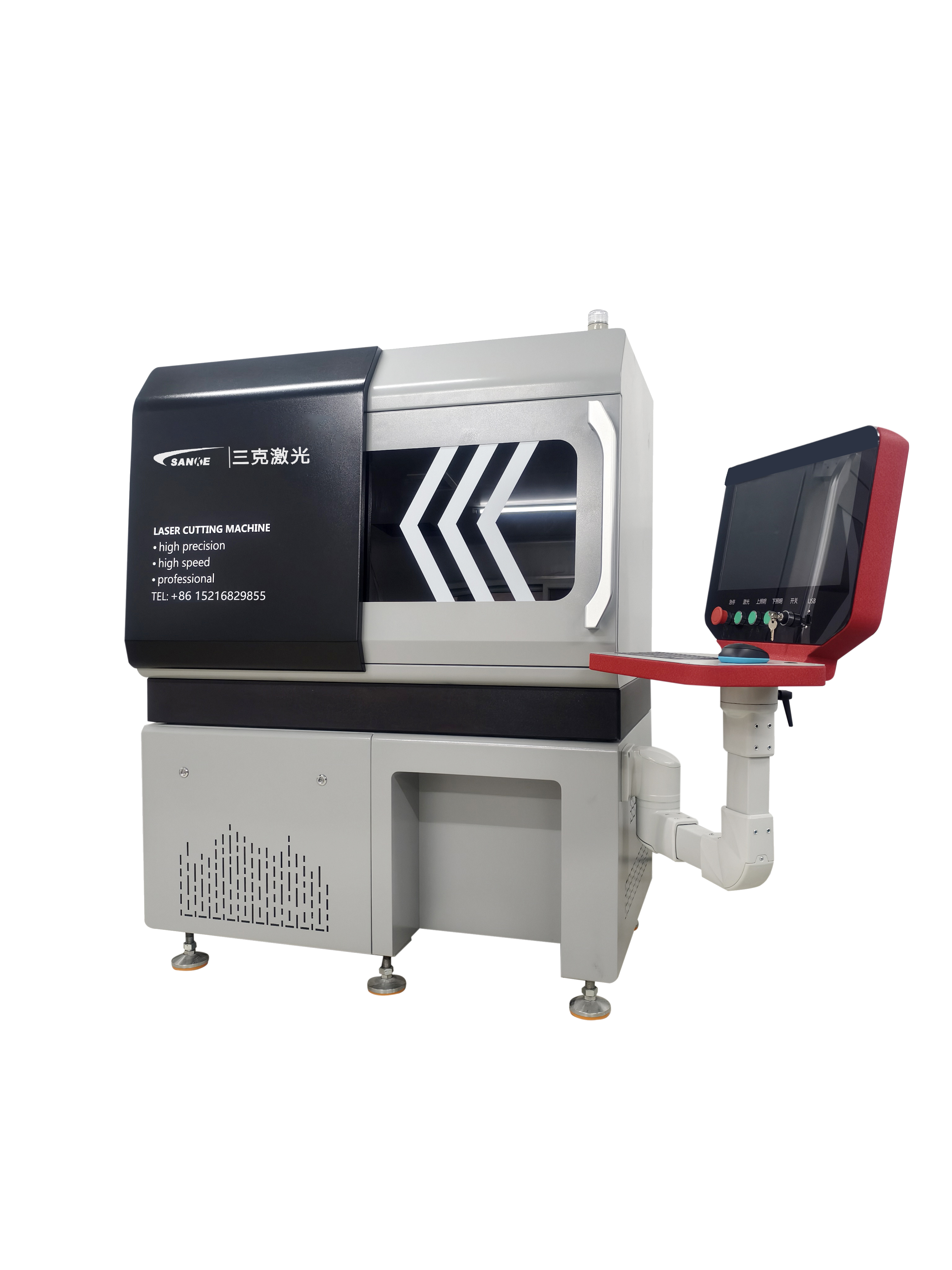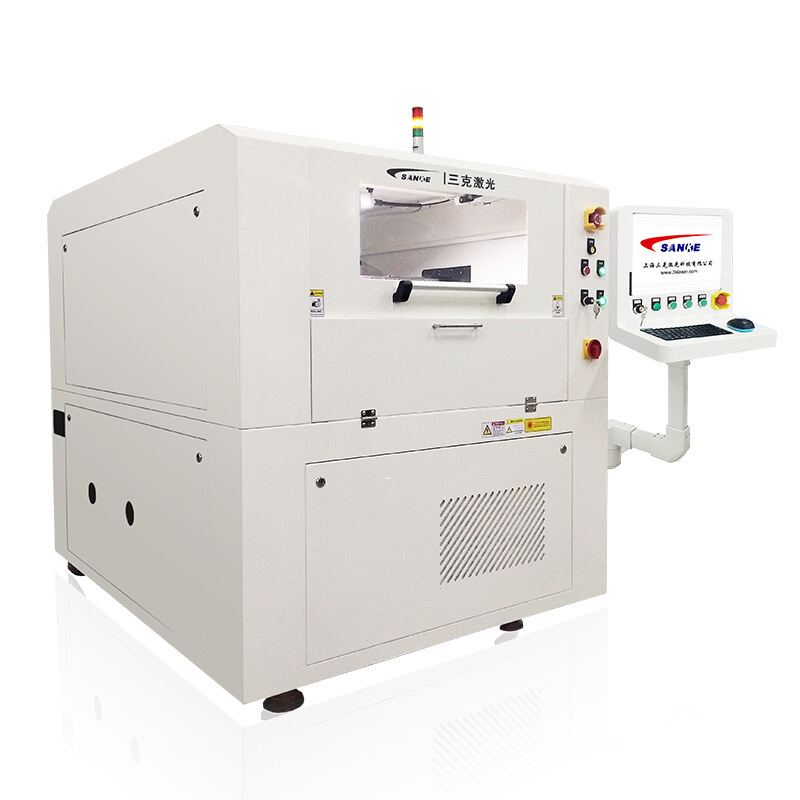Understanding the power requirements for laser drilling machines is crucial for manufacturers, engineers, and facility managers planning their industrial operations. The electrical demands of these sophisticated systems vary significantly based on laser type, drilling capacity, material thickness, and operational intensity. Proper power planning ensures optimal performance, prevents electrical infrastructure issues, and maintains consistent production output across diverse manufacturing environments.

Modern laser drilling systems encompass a wide spectrum of power configurations, from compact desktop units requiring minimal electrical infrastructure to industrial-grade systems demanding substantial three-phase power supplies. The complexity of power management extends beyond simple wattage considerations, encompassing cooling systems, auxiliary equipment, safety mechanisms, and peak power surge requirements that can significantly impact facility electrical planning and operational costs.
Fundamental Power Categories for Laser Drilling Systems
Low-Power Desktop and Benchtop Models
Entry-level laser drilling machines typically operate within the 10-50 watt range, making them suitable for precision work on thin materials, electronics manufacturing, and research applications. These compact systems generally require standard 110V or 220V single-phase power connections, with total electrical consumption ranging from 200-800 watts including cooling and control systems. The modest power requirements make them ideal for small workshops, educational institutions, and prototype development facilities.
Desktop models often incorporate air cooling or small water cooling systems that add 50-150 watts to the base power consumption. The overall electrical infrastructure requirements remain minimal, typically requiring dedicated 15-20 amp circuits to ensure stable operation. These systems offer excellent power efficiency ratios, often achieving 15-25% wall-plug efficiency in converting electrical input to useful laser output power.
Mid-Range Industrial Drilling Machines
Mid-range industrial laser drilling machine power requirements typically span 100-500 watts of laser output, translating to 2-8 kilowatts of total electrical consumption. These systems require 220V or 380V three-phase power supplies to handle the increased electrical demands of higher-power laser sources, sophisticated cooling systems, and precision motion control components. The power factor considerations become more critical at this level, often requiring power factor correction to maintain grid compliance.
Industrial mid-range systems incorporate closed-loop water cooling systems, high-precision servo motors, and advanced control electronics that collectively contribute to the overall power profile. Peak power consumption during startup and intensive drilling operations can exceed steady-state requirements by 20-40%, necessitating electrical infrastructure capable of handling these transient demands without voltage drops or circuit interruptions.
High-Power Industrial Laser Drilling Specifications
Heavy-Duty Manufacturing Systems
High-power laser drilling machines designed for continuous industrial production typically feature laser outputs ranging from 1-10 kilowatts, requiring electrical infrastructure capable of delivering 15-50 kilowatts of total power. These systems demand robust three-phase power supplies, often at 480V or higher voltages to minimize current requirements and improve efficiency. The electrical distribution systems must accommodate both the laser source and extensive auxiliary equipment including chillers, compressed air systems, and fume extraction units.
Heavy-duty systems often incorporate multiple laser heads, sophisticated beam delivery systems, and automated material handling equipment that significantly impact power requirements. The cooling systems alone can consume 3-8 kilowatts, while motion control systems, rotary tables, and positioning equipment add additional electrical loads. Proper electrical planning must account for simultaneous operation of all system components during peak production periods.
Ultra-High Power and Specialized Applications
Specialized laser drilling applications in aerospace, automotive, and thick material processing may require systems with 10-50 kilowatt laser outputs, translating to total facility power requirements of 75-200 kilowatts. These installations typically require dedicated electrical substations, high-voltage distribution systems, and sophisticated power conditioning equipment to ensure stable operation. The electrical infrastructure costs can represent a significant portion of the total system investment.
Ultra-high power systems often employ fiber laser technology or CO2 laser systems with exceptional beam quality and power density capabilities. The associated cooling requirements may necessitate industrial-grade chillers, cooling towers, or closed-loop cooling systems that operate continuously. Backup power systems, uninterruptible power supplies, and power quality monitoring become essential components of the electrical infrastructure to protect against costly production interruptions.
Laser Technology Impact on Power Requirements
Fiber Laser Power Characteristics
Fiber laser drilling machines typically offer superior electrical efficiency compared to traditional laser technologies, often achieving 25-35% wall-plug efficiency. A 1-kilowatt fiber laser system may require 3-4 kilowatts of total electrical input, including cooling and control systems. The compact design and solid-state nature of fiber lasers reduce auxiliary equipment requirements, resulting in lower overall power consumption and simplified electrical infrastructure needs.
Fiber laser systems benefit from instant-on capabilities and stable power output across varying operating conditions. The electrical load profile remains relatively constant during operation, with minimal warm-up periods and predictable power consumption patterns. This stability simplifies electrical planning and allows for more accurate power budgeting in multi-machine installations.
CO2 Laser Power Consumption Patterns
CO2 laser drilling machines typically require higher electrical input ratios, with wall-plug efficiencies ranging from 8-15%. A 1-kilowatt CO2 laser system may consume 6-10 kilowatts of total electrical power, including gas circulation, cooling, and high-voltage power supplies. The electrical infrastructure must accommodate the specific requirements of RF or DC excitation systems, which may have unique power quality and harmonic content considerations.
CO2 systems often require longer warm-up periods and may exhibit power consumption variations during operation as gas mixtures and thermal conditions stabilize. The cooling requirements are typically more substantial than fiber systems, with water cooling systems consuming additional electrical power for pumps, chillers, and temperature control equipment. Proper electrical planning must account for these dynamic power requirements throughout the operational cycle.
Cooling System Power Considerations
Air Cooling Systems
Air-cooled laser drilling machines typically incorporate fans, blowers, and heat exchangers that add 100-500 watts to the overall power consumption depending on system size and ambient conditions. These systems offer simplicity and reduced maintenance requirements but may have limitations in high-power applications or elevated ambient temperature environments. The electrical requirements remain relatively modest, usually compatible with single-phase power supplies for systems up to 1-2 kilowatts laser output.
Air cooling efficiency depends heavily on ambient temperature and humidity conditions, which can affect both power consumption and cooling performance. Facilities in warmer climates may experience higher power consumption as cooling fans operate at maximum capacity to maintain optimal laser temperatures. Proper ventilation and air circulation in the installation area become critical factors in overall system power efficiency.
Water Cooling and Chiller Systems
Water-cooled laser drilling systems typically require dedicated chillers or cooling loops that can consume 1-10 kilowatts depending on laser power and ambient conditions. Industrial chillers for high-power systems may require three-phase power supplies and sophisticated temperature control systems that add complexity to the electrical installation. The cooling power requirements often represent 20-40% of the total system electrical consumption in high-power applications.
Closed-loop cooling systems offer precise temperature control and reduced water consumption but require pumps, heat exchangers, and monitoring systems that contribute to overall power requirements. The electrical infrastructure must accommodate both steady-state cooling loads and peak demands during system startup or high-intensity drilling operations. Backup cooling systems may be necessary for critical production applications to prevent costly downtime from cooling system failures.
Auxiliary Equipment Power Requirements
Motion Control and Positioning Systems
Precision motion control systems in laser drilling machines typically consume 200-2000 watts depending on the number of axes, load requirements, and positioning accuracy specifications. Servo motors, linear actuators, and rotary tables require dedicated motor drives and power supplies that must be integrated into the overall electrical system design. High-speed positioning systems may have peak power requirements significantly higher than steady-state consumption during rapid acceleration and deceleration cycles.
Advanced motion control systems often incorporate linear motors, air bearings, or magnetic levitation systems that require specialized power supplies and conditioning equipment. The electrical infrastructure must provide clean, stable power to ensure positioning accuracy and prevent interference with laser control systems. Regenerative braking systems in some applications can actually return power to the electrical grid during deceleration, requiring bidirectional power flow capabilities.
Fume Extraction and Environmental Systems
Fume extraction systems for laser drilling applications typically require 500-5000 watts of electrical power for fans, filters, and air handling equipment. The power requirements scale with the volume of material being processed and the intensity of fume generation during drilling operations. Industrial installations may require centralized fume extraction systems serving multiple laser stations, with correspondingly higher power requirements and more complex electrical distribution needs.
Environmental control systems including compressed air, inert gas delivery, and workspace lighting add additional electrical loads that must be considered in facility planning. Emergency ventilation systems, fire suppression equipment, and safety interlocks may require backup power supplies or uninterruptible power systems to ensure continued operation during electrical disturbances. The cumulative power requirements of auxiliary systems can often equal or exceed the laser system itself in complex installations.
Electrical Infrastructure Planning Considerations
Power Quality and Conditioning Requirements
Laser drilling machines require stable, clean electrical power to achieve optimal performance and prevent damage to sensitive electronic components. Power quality issues including voltage fluctuations, harmonics, and electrical noise can significantly impact drilling precision and equipment reliability. Industrial installations often require power conditioning equipment, isolation transformers, and harmonic filters to ensure adequate power quality for sensitive laser systems.
Three-phase power distribution systems must maintain balanced loads and adequate short-circuit capacity to handle motor starting currents and other transient electrical demands. Power factor correction may be necessary to meet utility requirements and minimize electrical costs, particularly in installations with multiple high-power systems operating simultaneously. Proper grounding and electrical isolation become critical factors in preventing interference between laser systems and other facility equipment.
Backup Power and Reliability Systems
Critical production applications may require backup power systems to prevent costly interruptions from electrical outages or equipment failures. Uninterruptible power supplies sized for laser drilling systems must accommodate both the laser source and essential auxiliary equipment including cooling systems and safety circuits. The backup power capacity requirements can be substantial for high-power systems, often requiring multiple UPS units or engine-generator systems for extended outage protection.
Backup power systems must provide power quality equivalent to utility supplies to prevent damage to sensitive laser electronics during transfer events. Automatic transfer switches, load shedding systems, and priority power distribution become important considerations in comprehensive backup power designs. The cost and complexity of backup power systems often influence facility layout and equipment selection decisions in critical production environments.
FAQ
What is the typical power consumption range for industrial laser drilling machines?
Industrial laser drilling machines typically consume between 2-50 kilowatts of total electrical power, depending on laser output power, cooling requirements, and auxiliary equipment. Entry-level systems may require as little as 500 watts, while high-power production systems can exceed 100 kilowatts including all associated equipment. The laser efficiency, cooling method, and auxiliary systems significantly impact overall power consumption.
How do cooling system requirements affect total power consumption?
Cooling systems typically represent 20-40% of total electrical consumption in laser drilling machines. Air-cooled systems add 100-500 watts, while water cooling and chiller systems can require 1-10 kilowatts or more depending on laser power and ambient conditions. High-power systems often require industrial chillers that consume substantial electrical power continuously during operation.
What electrical infrastructure is needed for high-power laser drilling installations?
High-power laser drilling installations typically require three-phase electrical service at 380V, 480V, or higher voltages, with adequate capacity for both steady-state and peak power demands. Electrical infrastructure must include power conditioning equipment, proper grounding systems, and often backup power supplies for critical applications. The electrical installation costs can represent a significant portion of the total system investment.
How does laser technology type affect power requirements?
Fiber lasers typically offer 25-35% electrical efficiency, requiring 3-4 kilowatts of input power per kilowatt of laser output. CO2 lasers are less efficient at 8-15%, requiring 6-10 kilowatts of input power per kilowatt of output. The laser technology choice significantly impacts electrical infrastructure requirements, cooling needs, and operational costs throughout the system lifecycle.
 EN
EN
 AR
AR
 FR
FR
 DE
DE
 JA
JA
 KO
KO
 RU
RU
 ES
ES


